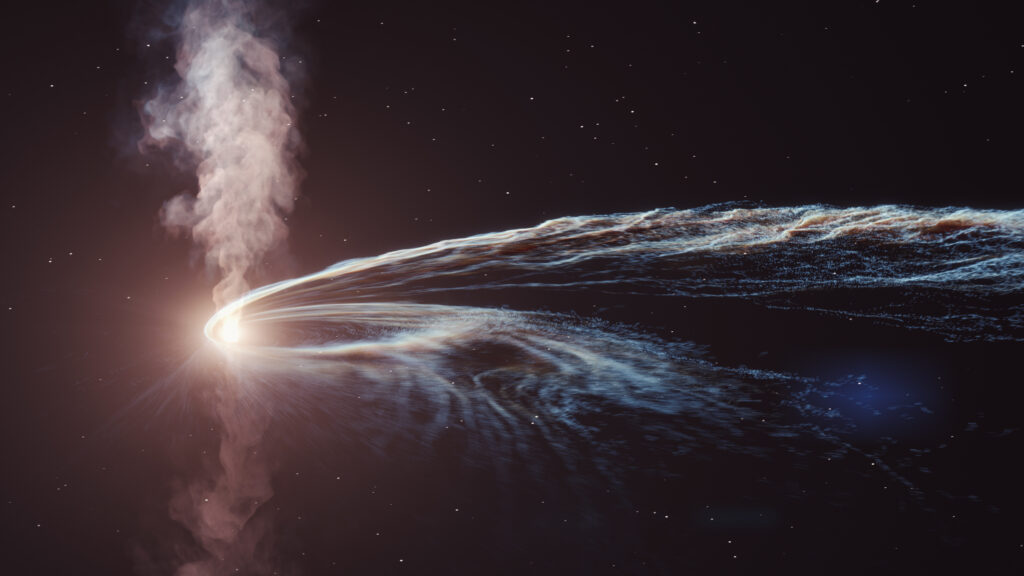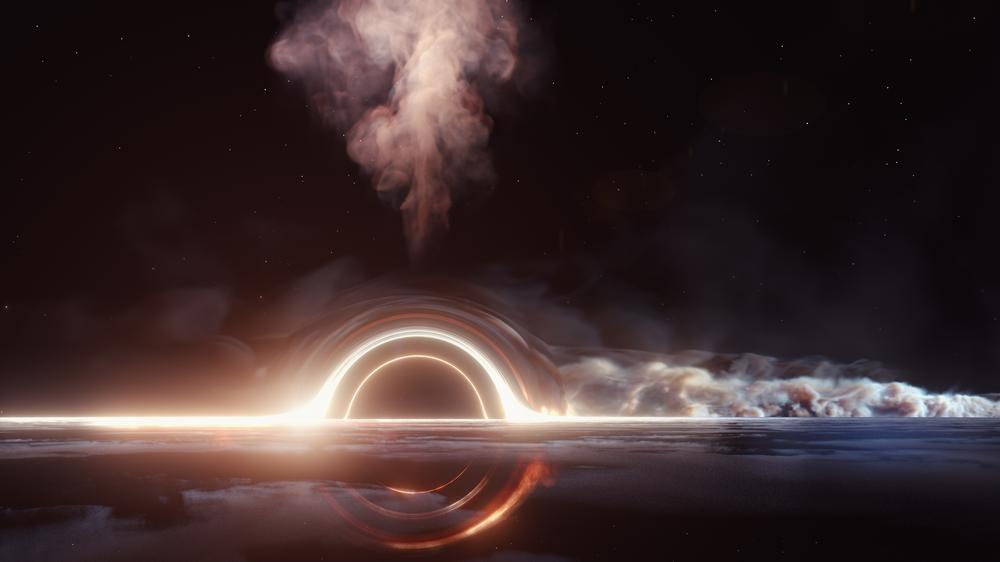Tracing back a ghostly particle from a star-shredding supermassive black hole, scientists have uncovered a gigantic cosmic particle accelerator. Some 700 million years ago, subatomic particles called neutrinos were hurled at nearly the speed of light toward Earth as a result of a peculiar cosmic encounter: A star wandered too close to a supermassive black hole and was ripped apart by the black hole’s colossal gravity.

Part of the star’s debris eventually fell back onto the black hole, causing a luminous flare. Scientists think that this phenomenon, called a tidal disruption event (TDE), could accelerate particles to nearly the speed of light. Those particles then collide with light or other particles to generate high-energy neutrinos.

Neutrinos are fundamental particles that far outnumber all the atoms in the universe but rarely interact with other matter. Astrophysicists are particularly interested in high-energy neutrinos, which have energies up to 1,000 times greater than those produced by the most powerful particle colliders on Earth. The first confirmed high-energy neutrino source, announced in 2018, was a type of active galaxy called a blazar.
The newly observed neutrino from the tidal disruption event is the first that can be traced back to a black hole. This scientific result was made possible by a large collaboration of theoretical and experimental scientists from Arizona State University, University of Wisconsin-Madison, Humboldt University, NASA, the Zwicky Transient Facility (ZTF) on Mount Palomar, the South Pole’s IceCube Neutrino Observatory and the Deutsches Elektronen-Synchrotron (DESY) in Germany.
The IceCube Neutrino Observatory is a facility of the U.S. National Science Foundation operated at the Amundsen-Scott South Pole Station under the U.S. Antarctic Program. Apart from IceCube and ZTF, the instruments Spectral Energy Distribution Machine (SEDM), Palomar 200-inch Hale Telescope (P200), Liverpool Telescope (LT), NASA’s Neil Gehrels Swift Observatory, Lowell Discovery Telescope, Lick Observatory Shane Telescope, Keck Telescope, ESA’s X-ray Multi-Mirror Mission (XMM-Newton), Karl G. Jansky Very Large Array (VLA), AMI Large Array (AMI-LA), MeerKAT, and NASA’s Fermi Large Area Telescope (Fermi-LAT) provided observational data for the study.
A team led by DESY scientist Robert Stein reports the observation in the journal Nature Astronomy. A theoretical model developed by Walter Winter, from DESY, and Professor Cecilia Lunardini, from Arizona State University’s Department of Physics, was published in the same issue of Nature Astronomy. Sources: news.asu.edu
